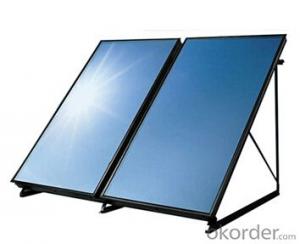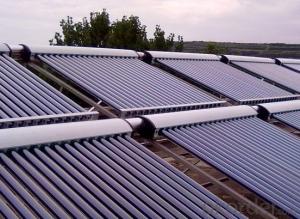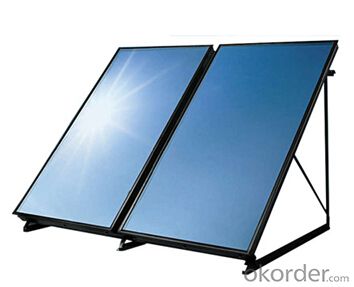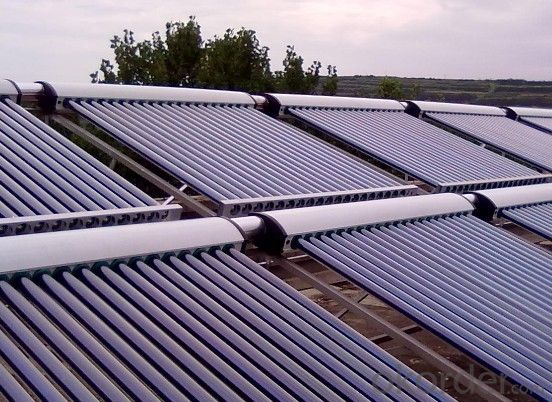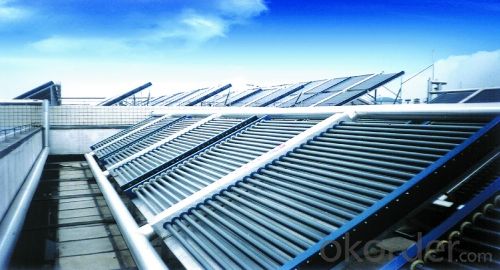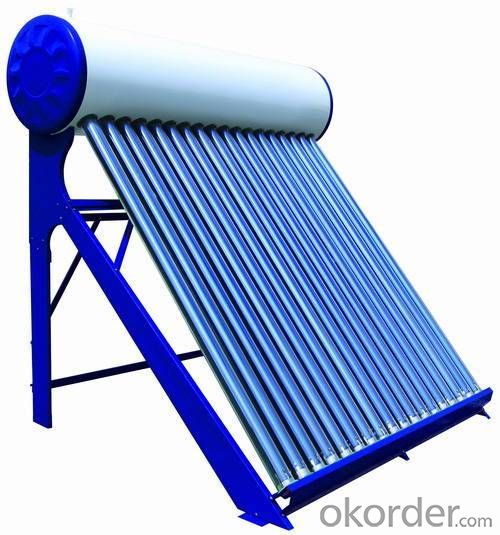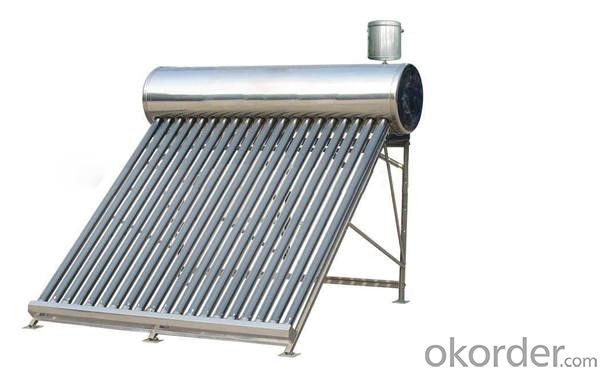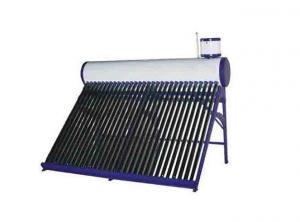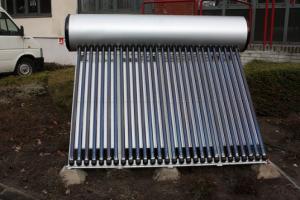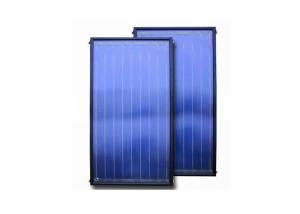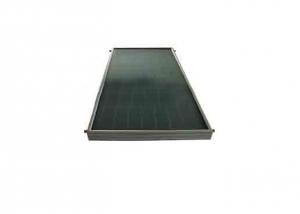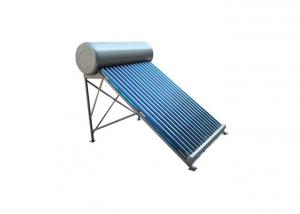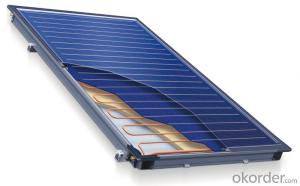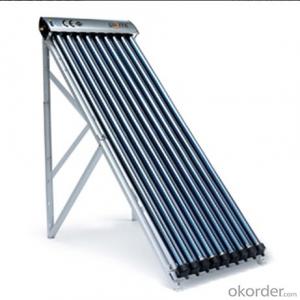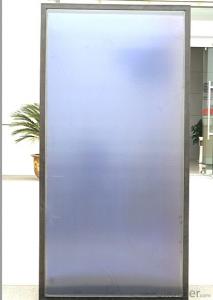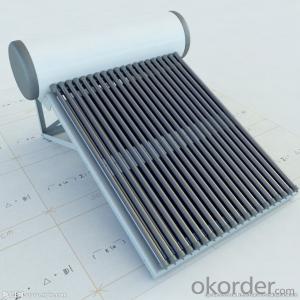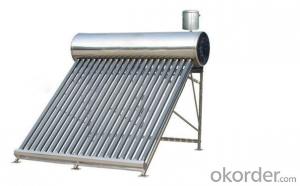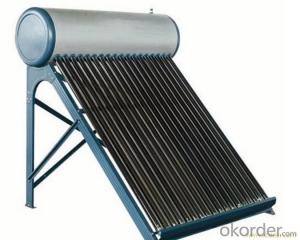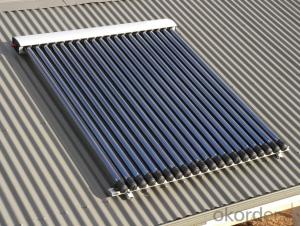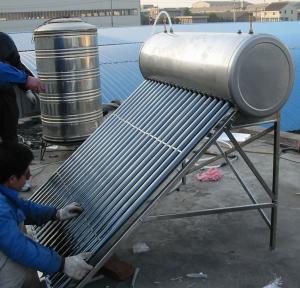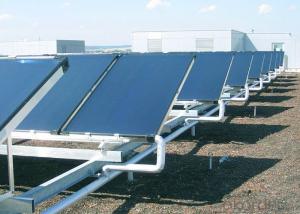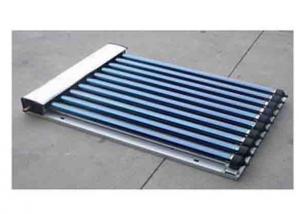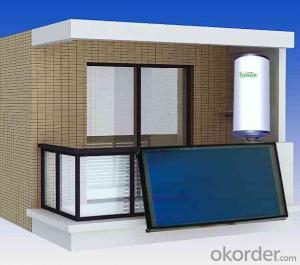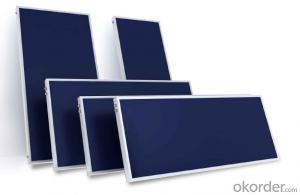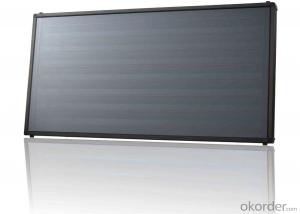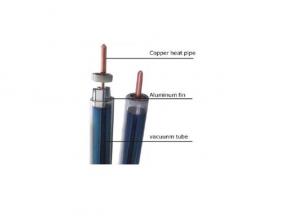Scoop Solar Collectors - 50Tube Vacuum Tube Solar Collector Supplier in China
- Loading Port:
- China main port
- Payment Terms:
- TT OR LC
- Min Order Qty:
- 10 set
- Supply Capability:
- 10000 set/month
OKorder Service Pledge
OKorder Financial Service
You Might Also Like
Introduction of Non-Pressure Solar Water Heater:
Non-pressure Solar Heater is one of the most economical solar water heating device with pretty high efficiency at the same time. It consists of hot water storage tank, solar vacuum tubes with mouth plug in storage tank, and bracket supporting tank and tubes.When cold water in evacuated tubes is heated with solar irradiation, as the specific gravities of hot water and cold water are different, hotter water goes upward to storage tank and colder water goes downward to glass tubes. through this continuous circulation, the cold water in storage tank will be gradually heated till sunset.
Solar water heaters working principle
1. The solar collector absorbs solar energy and transmits it to the solar water heater tank through circulation
2. When the temperature of the collector reaches the set value, the controller starts the circulation pump automatically
3. The circulation pump makes heat-conducting liquid circulate automatically
4. The heat-conducting liquid transfers heat to water by lower heat exchanger in the water tank.
5. When the temperature difference between solar collector and heat pipe solar water heaters tank doesn't reach the set value, the circulation pump will be shut automatically
6. In case the temperature of the water tank does not reach Tmax, Electric Heating Element will start to work automatically
Solar water heaters working station component:
1. Operating screen
2. Manometer
3. Pump speed adjust switches
4. Temperature difference circulation pump
5. Flow rate indicator
6. Return circuit connector
7. Safety valve
Solar water heaters specification:
Description | solar water heaters |
Material of out manifold | 0.55mm thickness color steel/ fluorine carbon steel |
Material of inner tank | Food grade 2.0 mm thickness SUS304 stainless steel |
Tank insulating layer | 40mm 45kg/m³ high-density polyurethane foamed |
Inlet and outlet hole | Male G1'' |
Max pressure | 0.6 Mpa |
Solar collector tube | 3.3 Borosilicate glass with N/Al coating |
Thickness of glass tube | 1.6mm |
Vacuum tube tightness | P≤0.005 Pa |
Absorption | as=0.93-0.96 (AM1.5) |
Emission ratio | εh=0.04-0.06 (80C±5C) |
Idle sunning property parameters | Y=220~260m2.C/KW |
Average heat loss coefficient | ULT=0.6~0.7W/(m2.C) |
Bracket: | 2.0mm thickness aluminum alloy |
Tank weight | 75KGS |
Tank size | 560mm Dia x 1810mm Height |
Tank capacity | 300L |
Solar collector | 2pcs 58x1800x15tube solar collector |
Absorber area | 2.811 m² |
Working station | SP116 working station |
Heat exchanger length | Upper:12m, Underside:18m |
Solar water heaters details show:
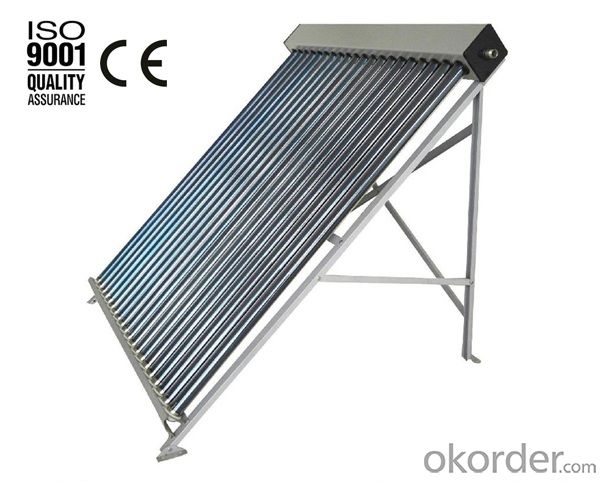
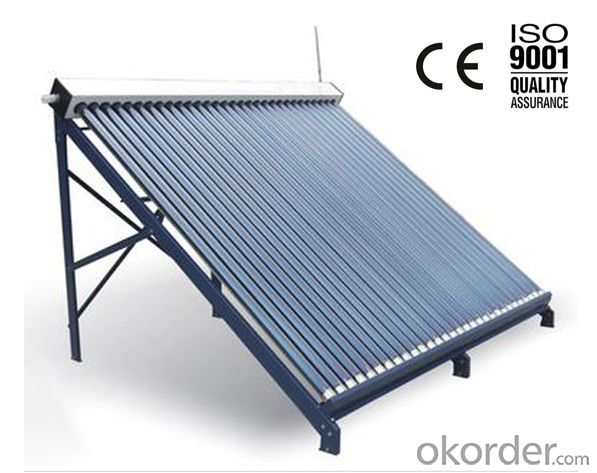
Benefits of this kind of solar water heaters:
1. Prolong the life of your existing water heater
2.Costs less than an electric, gas or oil water heater
3.No maintenance required
4.Lasts longer than a traditional hot water heater
5.Reduce your water heating costs
- Q: How much maintenance do solar collectors require?
- Solar collectors require minimal maintenance. They need to be cleaned periodically to remove dirt and debris that may hinder their efficiency. Additionally, checking the system for any potential leaks or damage is recommended. However, overall, solar collectors are designed to be low-maintenance and long-lasting.
- Q: Can solar collectors be used for heating prisons?
- Yes, solar collectors can be used for heating prisons. Solar thermal systems can be installed to capture and convert sunlight into heat energy, which can then be utilized for heating water, space, and other heating requirements within prison facilities. This can help reduce dependency on fossil fuels, lower energy costs, and contribute to sustainable and eco-friendly prison operations.
- Q: Can solar collectors be used in military operations?
- Yes, solar collectors can be used in military operations. They can provide a reliable and renewable source of energy for various applications, such as powering communication systems, charging batteries, lighting, and heating water. Solar collectors are portable, easy to deploy, and can reduce dependence on traditional fuel sources, making them an efficient and sustainable option for military operations in remote or off-grid locations.
- Q: Are there any limitations on the placement of solar collectors?
- Yes, there are limitations on the placement of solar collectors. Some of the key limitations include the availability of direct sunlight, shading from trees or buildings, local zoning regulations, and structural considerations. It is important to assess these limitations to ensure optimal efficiency and performance of solar collectors.
- Q: Can solar collectors be used in combination with solar panels?
- Yes, solar collectors can be used in combination with solar panels. While solar panels convert sunlight into electricity, solar collectors are typically used to heat water or air. By utilizing both technologies, one can maximize the energy potential of solar power by generating electricity and also providing hot water or heated air for various purposes.
- Q: How long do solar collectors last?
- Solar collectors typically have a lifespan of around 20 to 30 years, although with regular maintenance and proper care, they can last even longer.
- Q: Are solar collectors suitable for heating large indoor spaces?
- Solar collectors are not typically suitable for heating large indoor spaces on their own, as they provide a limited amount of heat. However, they can be used in combination with other heating systems to supplement the heat and reduce energy costs.
- Q: Can solar collectors be used for heating industrial facilities in winter?
- Yes, solar collectors can be used for heating industrial facilities in winter. Solar collectors, also known as solar thermal systems, are designed to capture the sun's energy and convert it into heat. This heat can then be used for various applications, including heating industrial facilities. To heat industrial facilities in winter, solar collectors can be integrated into the existing heating system. They can be used to preheat the water or air that is circulated throughout the facility, reducing the reliance on traditional heating sources such as fossil fuels or electricity. Industrial facilities typically require large amounts of heat, and solar collectors can be scaled up to meet these demands. Multiple collectors can be installed, and they can be connected in series or parallel to increase the overall heating capacity. Additionally, thermal storage systems can be used to store excess heat generated during sunny periods to be used during cloudy or nighttime conditions. Solar collectors are particularly beneficial for industrial facilities in terms of cost savings and environmental sustainability. By utilizing solar energy, these facilities can reduce their dependence on fossil fuels, leading to lower energy bills and a decreased carbon footprint. Furthermore, the use of solar collectors can help industrial facilities comply with environmental regulations and contribute to their corporate social responsibility goals. However, it is important to consider the specific requirements and limitations of each industrial facility before implementing solar collectors for heating. Factors such as available space, orientation of the facility, and heating demands should be carefully evaluated to ensure the effectiveness and efficiency of the solar thermal system. In conclusion, solar collectors can indeed be used for heating industrial facilities in winter. They offer a renewable and sustainable alternative to traditional heating sources, providing cost savings and environmental benefits to industrial facilities.
- Q: Are there any noise concerns with solar collectors?
- No, solar collectors do not produce any noise and are completely silent in operation.
- Q: Can solar collectors be used for heating sports fields?
- Yes, solar collectors can be used for heating sports fields. Solar collectors, such as solar thermal systems or solar panels, can collect solar energy and convert it into heat. This heat can then be used to warm up water, which can be circulated through pipes or radiators installed beneath the sports field to provide heating. This method is an eco-friendly and cost-effective way of keeping sports fields warm, especially during colder seasons.
Send your message to us
Scoop Solar Collectors - 50Tube Vacuum Tube Solar Collector Supplier in China
- Loading Port:
- China main port
- Payment Terms:
- TT OR LC
- Min Order Qty:
- 10 set
- Supply Capability:
- 10000 set/month
OKorder Service Pledge
OKorder Financial Service
Similar products
Hot products
Hot Searches
